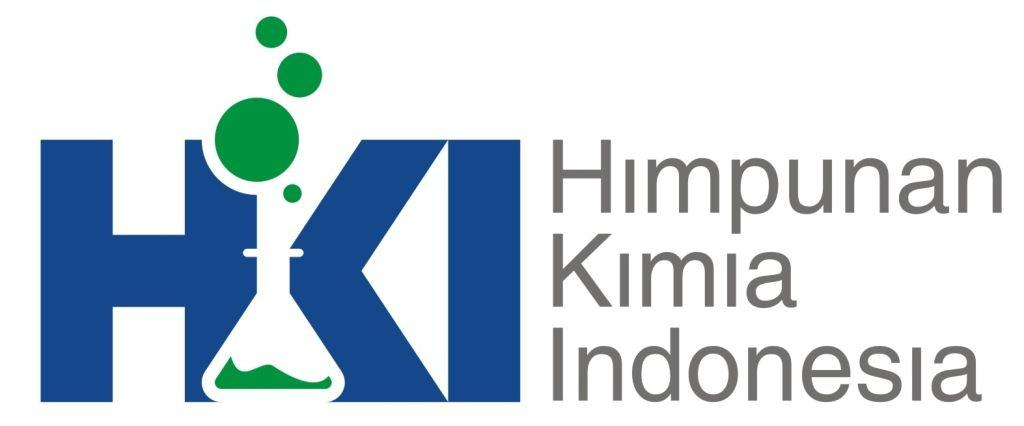Degradation of Imidacloprid Residue on Red Tomatoes (Solanum lycopersicum) by Advanced Oxidation Processes and Analysis using Spectrophotometer and HPLC
Abstract
The insecticide imidacloprid (C9H10ClN5O2) common used by farmers to control pests on red tomato plants, is a dangerous substance classified as a Class II toxic. The imidacloprid residue in red tomatoes enters the body, it will lead to health problems. The purpose of this study was to determine the percentage of imidacloprid residue that can be degraded using the Advanced Oxidation Processes (AOPs) method, which includes sonolysis, sonozolysis, ozonolysis, ozone water, and the effect of various parameters. Processing time, water volume, and red tomato mass were the test parameters studied. The change in imidacloprid residue concentration during the degradation process was measured using a UV/Vis spectrophotometer (double beam) with a wavelength of 200-400 nm and HPLC with mobile phase composition used was acetonitrile/water (65:35 v/v). With a processing time of 10 minutes, the imidacloprid residue in red tomatoes can be degraded 57.38% by sonozonolysis, 63.51 % by sonolysis, 85.17 % by ozonolysis, and 88.76 % by ozone water. The imidacloprid residue in 75 g of red tomatoes could be removed as much as 91.65% by treating with ozone water for 15 minutes. HPLC analysis showed that no intermediate compounds were detected in the imidacloprid residue degradation process in red tomatoes.
Keywords
References
Abdullah, Randhawa, M. A., Akhtar, S., Mansoor-Ul-Hassan, Asghar, A., Sohaib, M., Aadil, R. M., & Jahangir, M. A. (2016). Assessment of different washing treatments to mitigate imidacloprid and acetamaprid residues in spinach. Journal of the Science of Food and Agriculture, 96(11), 3749–3754. https://doi.org/10.1002/jsfa.7563
Aliasgharlou, N., Bahram, M., Zolfaghari, P., & Mohseni, N. (2020). Modeling and optimization of simultaneous degradation of rhodamine B and acid red 14 binary solution by homogeneous Fenton reaction: A chemometrics approach. Turkish Journal of Chemistry, 44(4), 987–1001. https://doi.org/10.3906/KIM-2002-59
Dhananjayan, V., & Ravichandran, B. (2018). Occupational health risk of farmers exposed to pesticides in agricultural activities. Current Opinion in Environmental Science and Health, 4, 31–37. https://doi.org/10.1016/j.coesh.2018.07.005
Gardoni, D., Vailati, A., & Canziani, R. (2012). Decay of Ozone in Water: A Review. Ozone: Science and Engineering, 34(4), 233–242. https://doi.org/10.1080/01919512.2012.686354
Güneş, E., Çİfçİ, D. İ., Dİnçer, A. R., & Güneş, Y. (2021). Removal of COD , aromaticity and color of a pretreated chemical producing industrial wastewater : a comparison between adsorption , ozonation , and advanced oxidation processes. 1–15. https://doi.org/10.3906/kim-2010-48
Han, W., Tian, Y., & Shen, X. (2018). Human exposure to neonicotinoid insecticides and the evaluation of their potential toxicity: An overview. Chemosphere, 192, 59–65. https://doi.org/10.1016/j.chemosphere.2017.10.149
Hao, J., Liu, H., Chen, T., Zhou, Y., Su, Y., & Li, L. (2011). Reduction of Pesticide Residues on Fresh Vegetables with Electrolyzed Water Treatment. Journal of Food Science, 76(4), 3–7. https://doi.org/10.1111/j.1750-3841.2011.02154.x
Iizuka, T., Maeda, S., & Shimizu, A. (2013). Removal of pesticide residue in cherry tomato by hydrostatic pressure. Journal of Food Engineering, 116(4), 796 dan 800. https://doi.org/10.1016/j.jfoodeng.2013.01.035
Ikeura, H., Kobayashi, F., & Tamaki, M. (2011). Removal of residual pesticides in vegetables using ozone microbubbles. Journal of Hazardous Materials, 186(1), 956–959. https://doi.org/10.1016/j.jhazmat.2010.11.094
Jiao, W., Xiao, Y., Qian, X., Tong, M., Hu, Y., Hou, R., & Hua, R. (2016). Optimized combination of dilution and refined QuEChERS to overcome matrix effects of six types of tea for determination eight neonicotinoid insecticides by ultra performance liquid chromatography-electrospray tandem mass spectrometry. Food Chemistry, 210, 26–34. https://doi.org/10.1016/j.foodchem.2016.04.097
Lozowicka, B., & Jankowska, M. (2016). Removal of 16 pesticide residues from strawberries by washing with tap and ozone water , ultrasonic cleaning and boiling. https://doi.org/10.1007/s10661-015-4850-6
Morrissey, C. A., Mineau, P., Devries, J. H., Sanchez-Bayo, F., Liess, M., Cavallaro, M. C., & Liber, K. (2015). Neonicotinoid contamination of global surface waters and associated risk to aquatic invertebrates: A review. Environment International, 74, 291–303. https://doi.org/10.1016/j.envint.2014.10.024
Niaz, A., Sial, R. A., Yaseen, M., Mand, G. A., Javed, M. H., Ahmad, E., Ahmad, R., & Rahim, M. (2016). Determination of imidacloprid residues in rice from various districts of Punjab using high performance liquid chromatography. Journal of Animal and Plant Sciences, 26(1), 170–176.
Pinheiro, J., Alegria, C., Abreu, M., Sol, M., Gonçalves, E. M., & Silva, C. L. M. (2014). (Solanum Lycopersicum, CV. Zinac) at two maturity stages following heat treatment, pp. 1-13, 2014. 1–13. https://doi.org/10.1111/jfpp.12279
Putri, R. A., Safni, S., Wellia, D. V., Septiani, U., & Jamarun, N. (2019). Degradasi Zat Warna Orange-F3R dan Violet-3B secara Sonolisis Frekuensi Rendah dengan Penambahan Katalis C-N-Codoped TiO2. Jurnal Kimia Valensi, 5(1), 35–43. https://doi.org/10.15408/jkv.v5i1.7801
Qi, H., Huang, Q., & Hung, Y. (2017). Department of Food Science and Technology , University of Georgia , 1109 Experiment Street ,. Food Chemistry. https://doi.org/10.1016/j.foodchem.2017.06.144
Safni, S., Khoiriah, K., Syukri, S., & Gunlazuardi, J. (2020). The operational parameters effect on photocatalytic degradation of diazinon using carbon and nitrogen modified TiO2. Rasayan Journal of Chemistry, 13(3), 1919–1925. https://doi.org/10.31788/RJC.2020.1335743
Safni, Safni, Safitri, V. Y., Santoni, A., Wellia, D. V., & Khoiriah, K. (2017). Degradation of Paracetamol by Photolysis Using C-N-codoped TiO2. Molekul, 12(2), 189. https://doi.org/10.20884/1.jm.2017.12.2.378
Safni, Safni, Wahyuni, M. R., Khoiriah, K., & Yusuf, Y. (2019). Photodegradation of phenol using N-doped TiO2 catalyst. Molekul, 14(1), 6–10. https://doi.org/10.20884/1.jm.2019.14.1.447
Sharma, A., Kumar, V., Bhardwaj, R., & Thukral, A. K. (2017). Seed pre-soaking with 24-epibrassinolide reduces the imidacloprid pesticide residues in green pods of Brassica juncea L. Toxicological and Environmental Chemistry, 99(1), 95–103. https://doi.org/10.1080/02772248.2016.1146955
Souza, L. P. de, Faroni, L. R. D. A., Heleno, F. F., Pinto, F. G., Queiroz, M. E. L. R. de, & Prates, L. H. F. (2018). Ozone treatment for pesticide removal from carrots: Optimization by response surface methodology. Food Chemistry, 243, 435–441. https://doi.org/10.1016/j.foodchem.2017.09.134
Wang, S., Wang, J., Wang, T., Li, C., & Wu, Z. (2019). Effects of ozone treatment on pesticide residues in food: a review. International Journal of Food Science and Technology, 54(2), 301–312. https://doi.org/10.1111/ijfs.13938
DOI: 10.15408/jkv.v7i2.21630
Refbacks
- There are currently no refbacks.
Copyright (c) 2021 Safni - Safni, Hazanita - Jumiaty, Hermansyah - Azis

This work is licensed under a Creative Commons Attribution-ShareAlike 4.0 International License.

